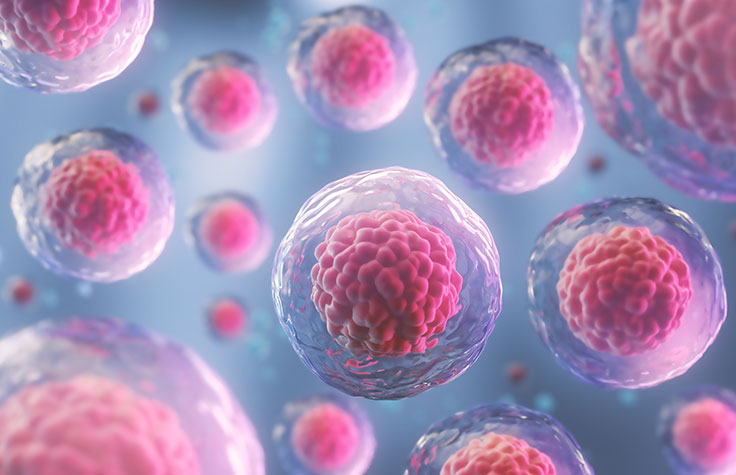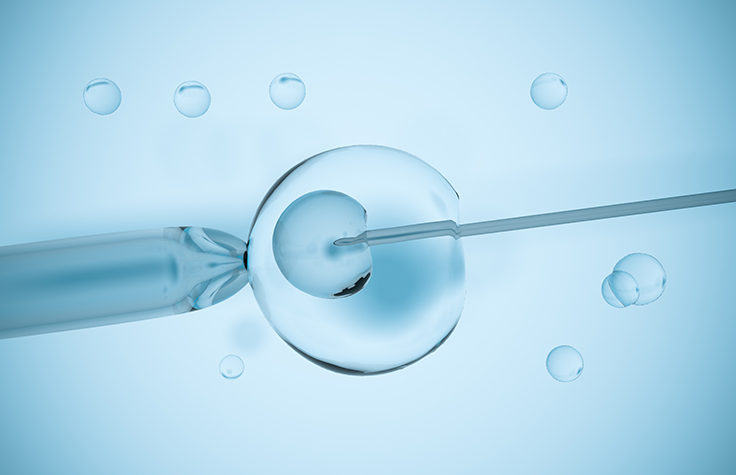Preimplantation Genetic Screening (PGS)
What is PGS?
Preimplantation genetic screening (PGS), also known as preimplantation genetic testing for aneuploidy (PGT-A), determines the chromosomal status of an embryo by screening all 23 chromosome pairs, providing valuable insights to researchers studying IVF.
IVF failure can sometimes be due to embryo aneuploidy - embryos with an abnormal number of chromosomes.1,2 Aneuploidy can occur in any embryo; however, the chances increase with maternal age.3,4

A Brief History of PGS

FISH
Preimplantation genetic screening was originally performed using fluorescence in situ hybridization (FISH). Because FISH does not screen all 24 chromosomes, its efficacy and accuracy for detecting euploid embryos is limited.

Arrays
New technologies were developed and applied to PGS. Array-based technology facilitated screening of all 24 chromosomes in the embryo, significantly improving PGS.

Next-Generation Sequencing
NGS, the latest technological breakthrough, is setting a new standard in PGS. NGS offers reliable PGS results, streamlined workflows, higher throughput capabilities, and customizable assays for easy portfolio expansion.
How Preimplantation Genetic Screening Works

Following ovarian stimulation and egg retrieval, a single or a few cells are biopsied from the in vitro embryo.

In vitro embryos are screened for aneuploidy.
Screening Embryos for Aneuploidy with PGS
After fertilized oocytes are retrieved, a single or few cells are removed from the in vitro embryo through a biopsy. The cell or cells are analyzed for their aneuploidy status by screening all 24 chromosomes.
Preimplantation genetic screening can be performed using next-generation sequencing, the latest technological innovation, or an array-based method.

Genomics and PGS
Dr. Nathan Treff discusses the technology behind preimplantation genetic screening.
Listen to Podcast
Featured PGS Products
Empower your research with these NGS-based preimplantation genetic screening products. Get an entire view of chromosomal status.
MiSeq System
Perform rapid aneuploidy screening using the MiSeq System. Multiplex up to 24 samples per run. The on-instrument software performs secondary analysis of the sequencing data, demultiplexing and aligning the reads to the reference genome. BAM files from the MiSeq System are imported directly into the BlueFuse Multi Analysis Software using the prepared sample sheet.
BlueFuse Multi Analysis Software
BlueFuse software provides molecular cytogenetic and genetic information obtained from the biopsied in vitro embryos, analyzed in a single framework. It offers a clear, intuitive user interface, a common workflow, and scales for the needs of your lab. This widely-implemented software is used in the majority of laboratories performing PGS.
Related Content
Karyomapping
This technique is used to assess the likelihood of an embryo carrying a gene mutation that may be linked to an inherited genetic disorder.
Cytogenomics
Together, NGS and microarrays enable cytogenomic analysis of chromosome aberrations for constitutional and cancer research.
References
- Centers for Disease Control and Prevention.Org Website. Accessed March 11, 2016.
- Scott RT, Ferry K, Su J, Tao X, Scott K, Treff NR. Comprehensive chromosome screening is highly predictive of the reproductive potential of human embryos: a prospective, blinded, nonselection study. Fertil Steril. 2012;97(4):870-875.
- Ata B, Kaplan B, Danzer H, et al. Array CGH analysis shows that aneuploidy is not related to the number of embryos generated. Reprod Biomed Online. 2012;24:614–620.
- Harton GL, Munne S, Surrey M, et al. Diminished effect of maternal age on implantation after preimplantation genetic diagnosis with array comparative genomic hybridization. Fertil Steril. 2013;100(6):1695–1703.